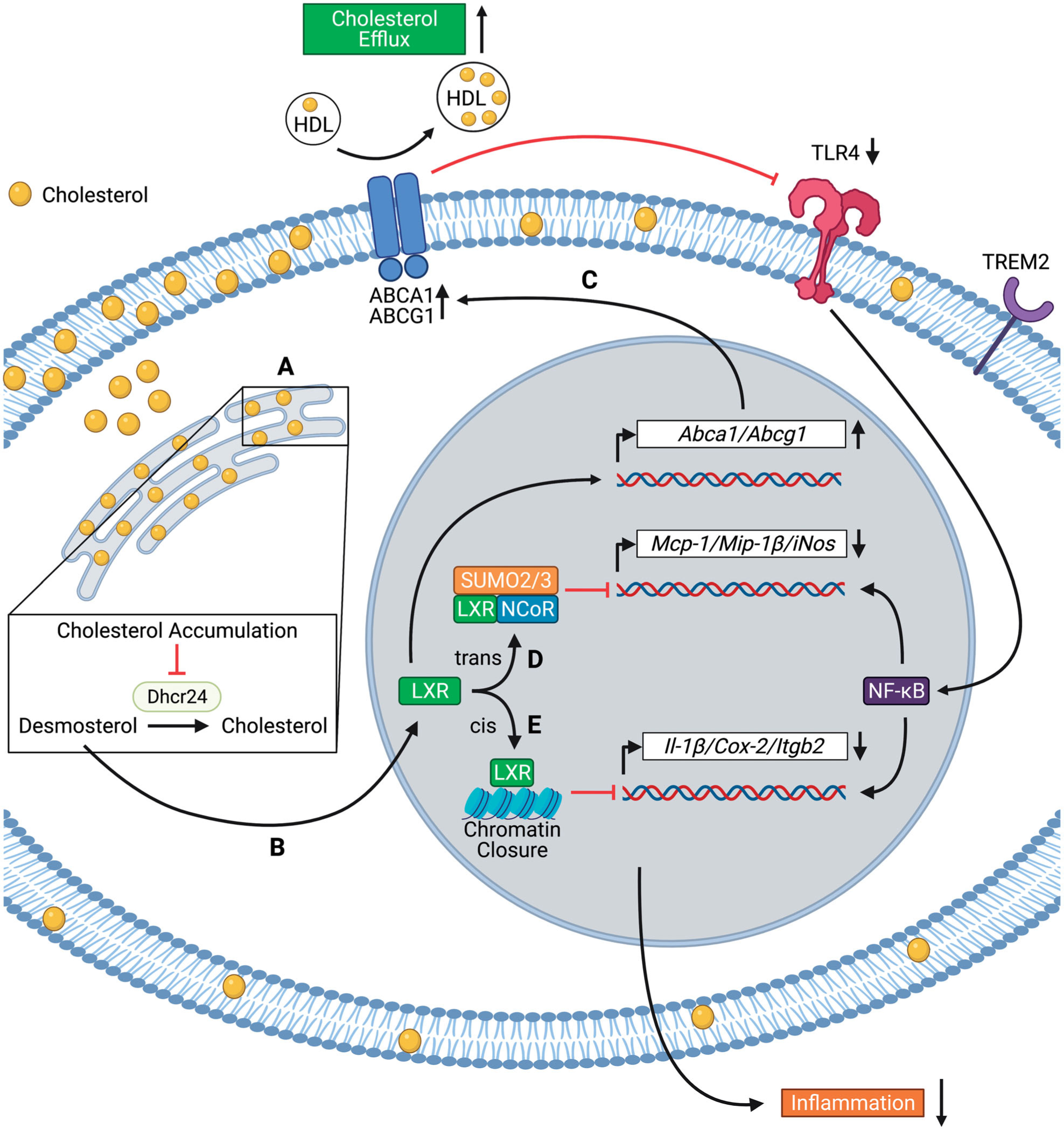Figure 1.

Mechanisms of suppression of inflammatory gene expression by liver X receptor (LXR) activation in foamy macrophages. Foamy macrophages in atherosclerotic plaques express high levels of Trem2. (A) Cholesterol accumulation in the endoplasmic reticulum inhibits the enzymatic activity of 24-dehydrocholesterol reductase (Dhcr24), leading to desmosterol accumulation; (B) Desmosterol activates the transcription factor LXR. LXR activation suppresses inflammation via cholesterol efflux-dependent (C) and independent (D–E) mechanisms; (C) LXR upregulates the expression of ATP-Binding Cassette Transporter A1 and G1 (Abca1 and Abcg1), leading to cholesterol efflux. Cholesterol efflux decreases Toll-like receptor 4 (TLR4) surface expression and NF-κB activation; (D) LXR forms a complex with SUMO-2/3 and NCoR, which trans-represses the transcription of Mcp-1 (monocyte chemoattractant protein-1), Mip-1β (macrophage inflammatory protein-1β), and iNos (inducible nitric oxide synthase); (E) LXR binds to inflammatory gene enhancers, leading to cis-repression of Il-1β (interleukin-1β), Cox-2 (cyclo-oxygenase-2), and Itgb2 (integrin beta 2) through chromatin closure. The figure has been created with Biorender.com.
